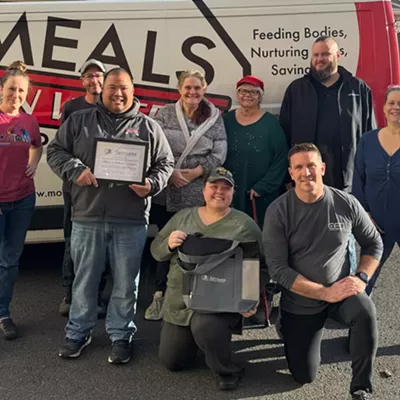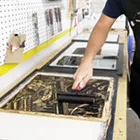Fall means back to school. Backpacks, lunchboxes and first-day jitters. It also means new challenges for our area’s teachers. Communicating effectively with 20 or more small children can be a challenge. Throw in the child who struggles with speaking and social interaction, and teachers can have a real dilemma. How can they identify what’s holding the child back and effectively educate that child?
As many as six children out of 1,000 in Washington state are affected by autism, according to the Northwest Autism Center (NWAC). Daycare, preschool and elementary teachers may be the first to notice a child is having trouble, and they need tools to work with parents to help identify children’s needs accurately — and teach them effectively.
“Everyone should be able to get what they need,” says NWAC Executive Director Dawn Sidell.
To help fill that need, some Eastern Washington educators were back in the classroom over the summer learning how to help children and families dealing with autism. The program, Summer 2008 Autism Intensive, presented by NWAC, was the first of its kind in the area.
Daycare provider Terry Miethe was one of about 30 educators who participated in the program hosted by Eastern Washington University, the University of Washington and the Northwest Autism Center. “I’m excited. I can’t wait to go back to work,” says Miethe. She credits the course with giving teachers tools to use in the classroom. “Helping them identify certain behaviors that just aren’t typical, things that aren’t always the norm,” she says. “Helping parents cope with that and give them avenues to help their child is a big thing.”
The NWAC teacher training also comes with nine months of follow-up provided by an autism specialist. “I will be going to visit the schools once a month for the first nine months of the school year to help them use what they have learned and see what else they need to make sure their students are successful,” says Shire Ackerman with the Domino Project Preschool, which teaches autistic children.
Ackerman says they will concentrate on rural schools because they are often left behind when it comes to teacher training opportunities.
And this is just the beginning.
“There really isn’t anything out there like this. There are workshops here and there, but these workshops will be offered every year — so if there are new educators that come to the district that need the support, then superintendents can send them every year,” says Ackerman.
There is no cure for autism, but NWAC believes the best way to help an autistic child excel is through appropriate education strategies. That education begins with the teachers and daycare providers.
“I have a pretty strong belief that all individuals — children, adolescents or adults — should be able to reach their highest potential. And they should be able to do that with their families, with their neighbors, with their brothers and sisters,” says Sidell. In addition to her role as director of NWAC, Sidell has first-hand experience with autism, as the mother of a teenage boy with the disorder. “It would break my heart if my son couldn’t stay in school because there wasn’t the right support there for him.
“You can keep children from having to go to institutions if you can give them the right skills,” Sidell states. “It’s very personal for me.”
















